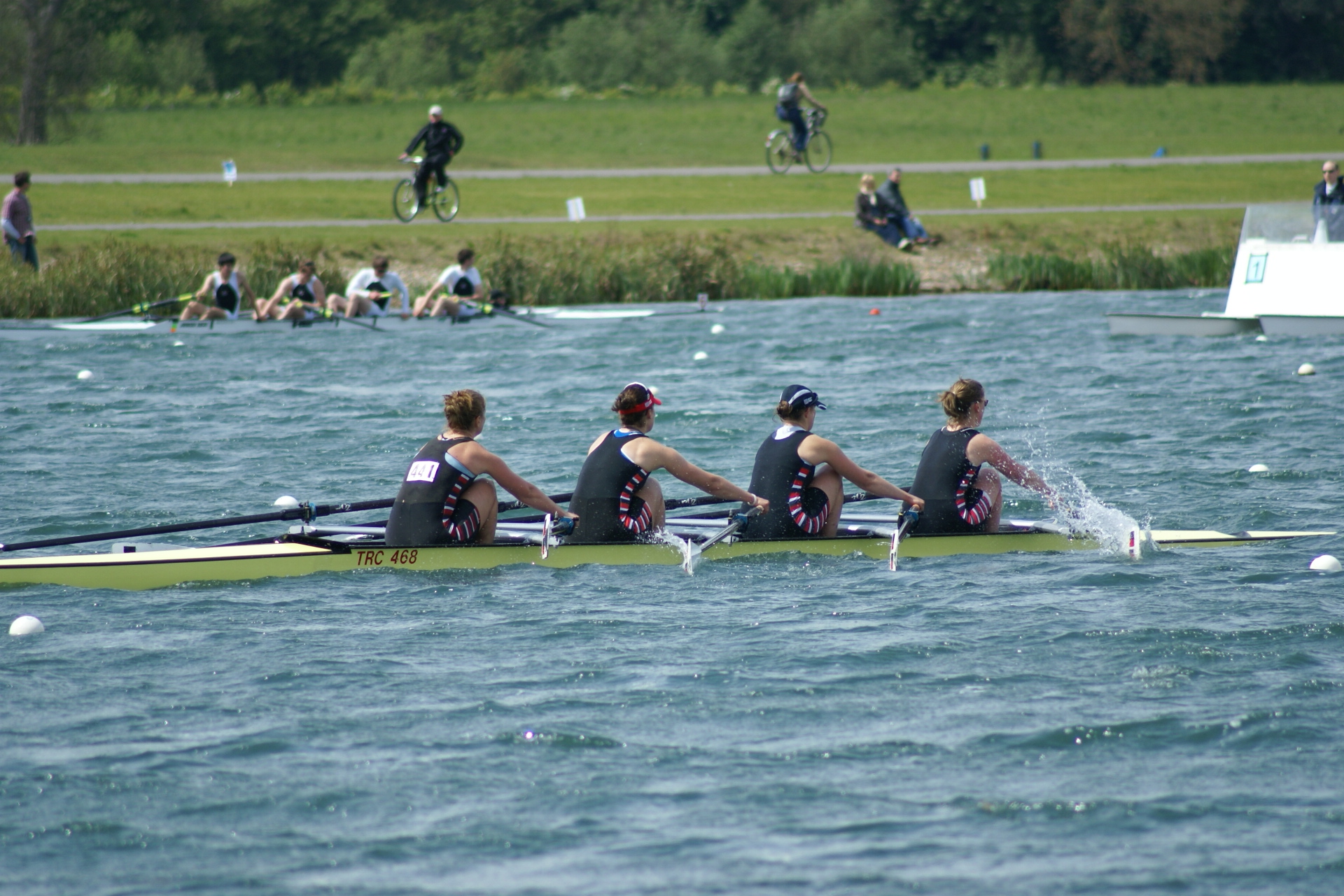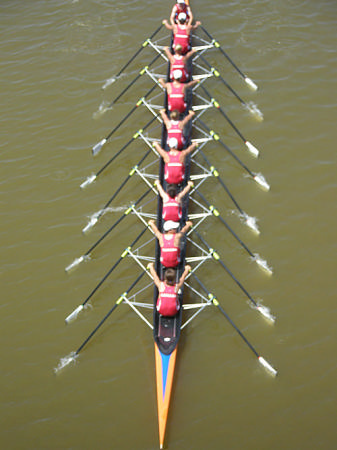In the sport of rowing, there are many different types of boats. Knowledge of the different types of boats is important not only for understanding the basics of the sport but also to be able to understand racing.
The types of boats can be separated into to main categories. These categories are sweep rowing boats and sculling boats. In sweep rowing each rower only has one oar. In sculling each rower has two oars. The stroke varies slightly in between sculling and sweep rowing.
This is a photo of sweep rowing. It shows how each rower only has one oar.
This is a photo of a sculling boat. The each person in the boat would have two oars.
The categories of sculling and sweep can be further broken down by the number of people in the boat Sweep boats are referred to simply by the number of rowers in the boat. If there are eight rowers the boat is called an eight, if there are four rowers it is called a four, if there are two rowers it is called a pair. Sculling boats are referred to in terms of multiples. If there are eight rowers it is called an octuple, if there are four rowers it is called a quad, if there are two rowers it is called a double, and if there is one rower it is called a single.
Boats are also defined as to weither or not they have a coxswain. Coxswains are an additional person in the boat besides the rowers. The coxswain does not have an oar to help power the boat, but rather their job is to steer the boat and motivate the rowers. They are essentially the brain of the boat. Coxswains are often referred to as Cox. Boats will out coxswains are called coxless or straight boats. All boats with eight people have coxswains. All singles do not have a coxswain. Fours, quads, doubles, and pairs can either have a coxswain or not.
Boat names are often abbreviated to simply numbers and symbols. For example a four with a coxswain would be abbreviated to 4+. The 4 refers to the number of rowers in the boat. The + refers to the fact that there is a coxswain. If there was not a coxswain it would be a 4- . Sculling boats have the additional symbol of x. If a boat was a quad it would be referred to as 4x. It is especially helpful to know these abbreviations if you are trying to look at a race schedule or results of a race.
Here are some photos of boats to help you better identify the many different types.
Single (1x)
Double (2x)
Coxless Pair (2-)
Coxed Pair (2+)
The coxed pair is not often seen at races. It is not recognized as an event at races hosted by FISA (the governing body of world rowing). These are events such as Olympics and the World Rowing Championships
Coxed Quad (4x)
In this type of boat the coxswain is in the back of the boat.
Coxless (straight) Quad (4x)
Coxed Four (4+)
Uncoxed (straight) 4-
Eight (8+)
Octuple (8x)
The Octuple is not often raced in the United States. It is mainly for exhibition. It is not recognized as an event at races hosted by FISA (the governing body of world rowing). These are events such as Olympics and the World Rowing Championships
As you can see there are many different types of boats. Most rowers can row in all types of boats, but they do generally have the favorite types. It is important to understand the different types of boats in order to understand racing.
The most common types of boats that youth and collegiate rowers race are the 4+ and the 8+. In both collegiate and youth rowing the pairs, doubles, and singles are used primarily for training purposes. These boats allow for more individual work and technical lessons that can be applied to rowing in the larger boats. For master's rowing, which is the name used for adult rowers, the focus falls more on small boats such as single, pair, and double. This happens because master's rowing tends to be more of an individual sport rather than a team sport.











No comments:
Post a Comment